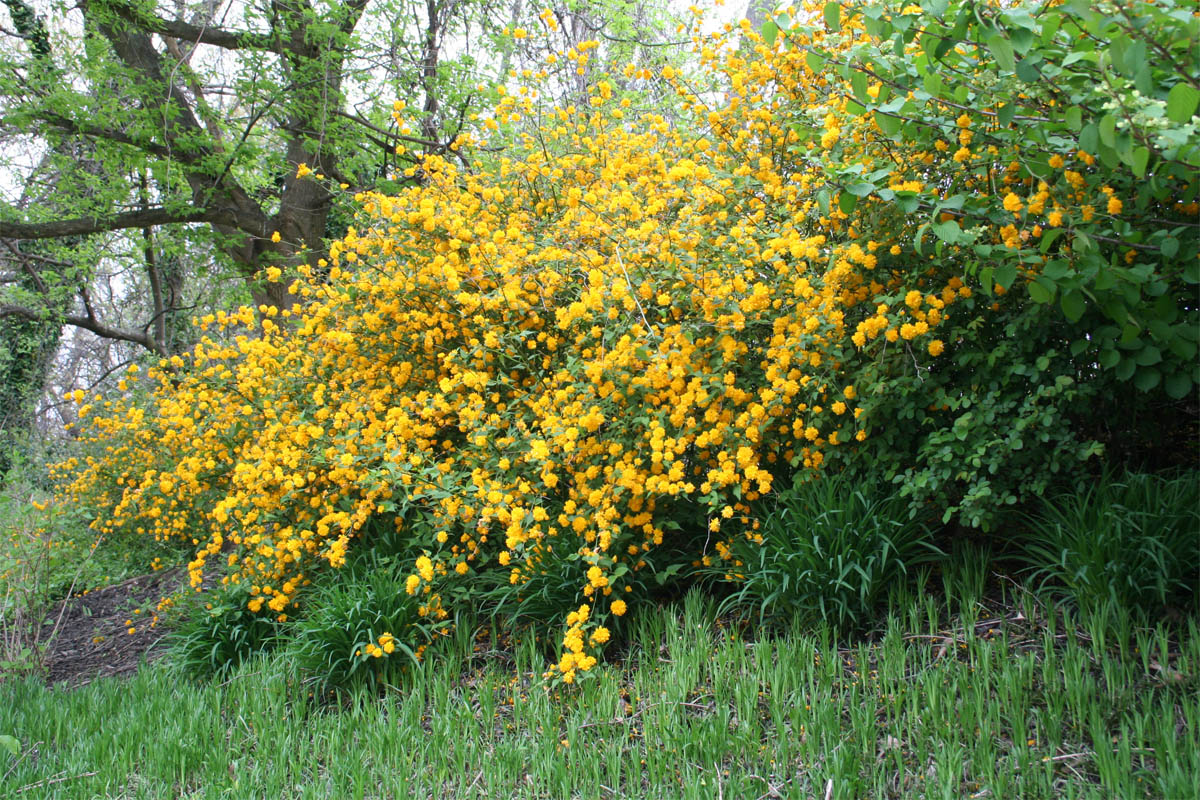
Submitted by Jason Reeves, Horticulturist, UT Gardens, Jackson
One of my early memories of plants is of Japanese Kerria, or Kerria japonica. It grew at the corner of the well house at my great grandparents’ farm. My grandmother called it Yellow Rose of Texas, and when in full bloom, it was a beautiful sight. It wasn’t until I went off to college some 10 years later that I learned it wasn’t truly a rose and it wasn’t from Texas. Kerria is actually native to China. Funny, how common names can be so misleading.
Kerria will grow under most conditions but performs best in well drained, average to lean soil in part to full shade. In full sun it often looks bleached out and the flowers fade more quickly. It is drought tolerant once established and virtually pest free. The 1.5-inch blooms can be a brilliant yellow to deep golden color, and single or double flowers cover the plant in April about the same time the bright green leaves emerge. The alternating leaves are oval, have doubly serrated margins and impressed leaf veins that give them an attractive quilted appearance. The thin upright arching zigzag stems are bright green and are especially showy during the winter months. Dead stems should be removed each winter while they are easily visible. Old plants can be rejuvenated by cutting the entire plant back near to the ground.
Kerria is slow growing at first but becomes a fast grower in just a few years. It forms a thick arching twiggy mass reaching 3- to 6-feet tall and has a tendency to sucker, making it a good plant for mass plantings in difficult shady locations. It’s great for naturalizing and even erosion control. Suckers can be dug to keep it in bounds, and they can be transplanted to a new location. The plant is hardy in zones 4 to 9.
Several of the more common cultivars include: ‘Picta’ – which has gray-green leaves with white variegation; ‘Pleniflora’ – with double golden yellow flowers; ‘Honshu’ – which sports large flowers; and ‘Shannon’ – which is a larger growing, vigorous form with large flowers.
Jason Reeves is a Horticulturist and Research Associate at the West Tennessee AgResearch and Education Center in Jackson. The UT Gardens located in Knoxville and Jackson are part of the University of Tennessee Institute of Agriculture. Their mission is to foster appreciation, education and stewardship of plants through garden displays, collections, educational programs and research trials. The gardens are open during all seasons and free to the public.
See http://utgardens.tennessee.edu/ and http://westtennessee.tennessee.edu/ornamentals/ for more information.
Contacts:
Jason Reeves, UT Gardens, Jackson, 731-424-1643
Patricia McDaniels, UTIA Marketing and Communications Services, 615-835-4570